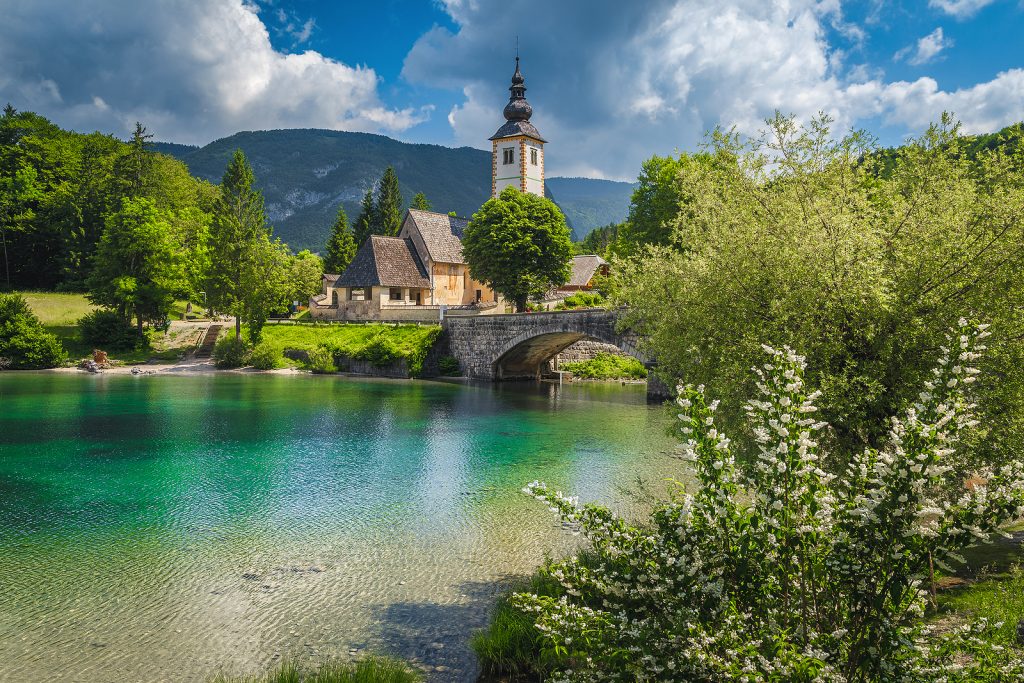Tens of thousands of hikers are drawn each year to the Julian Alps’ scenic views but remain largely oblivious to the flora around them. Slovenia’s Bohinj International Wild Flower Festival is working to change that.
Slovenia is home to just two million people, but 4,000 unique species of wildflowers can be found in its meadows and mountainsides. Although still less trafficked than its neighbours’ Alps, tourism is growing, and the country is working to build the infrastructure to ensure visitors have high-quality and sustainable stays.
From May 19 through June 4, the Bohinj International Wild Flower Festival will welcome visitors to Slovenia’s Triglav National Park to explore the rich botanical beauty around the shores of Lake Bohinj in the Julian Alps.
- Hungary’s Veszprém takes regional approach as European Capital of Culture
- Greek villages and hidden submarines: Postcards from the Albanian Riviera
- Why the words rude and vile explain Romania
While many people around the world are now familiar with the much-photographed Lake Bled—with its cliffside castle and church on an island—from social media, Lake Bohinj is just 25 kilometres up the road and is within the national park.
Directly surrounded by mountain peaks and with a lakeshore church of its own, Lake Bohinj has notably fewer tourist buses than increasingly developed Bled and immediate proximity to hiking trails.
Triglav National Park borders Italy and is only one road away from the Austrian border, making it a convenient distance from the international airports in Ljubljana and Trieste—or Venice, Graz, and Vienna with slightly longer transit times. Lake Bohinj is easily accessed by direct buses from Ljubljana, and visitors can stay either in Ribčev Laz on the lake’s southeastern shore or in the two dozen other villages in surrounding picturesque hay meadows.
Stay longer
Tourism accounts for 10.6 per cent of Slovenia’s gross domestic product (GDP) and 11 per cent of its total employment. While many are drawn to Slovenia’s Adriatic towns of Piran and Koper on the Istrian peninsula and capital of Ljubljana, the country remains largely synonymous with its pristine mountains.
Those mountains only stay pristine because of sustainable ecological and tourism practices. Maximising the number of tourists would necessitate clearing forest and paving over bogs to build more lodging to handle the increased volume, and crowds trampling meadows would inevitably detract from one of the draws of the mountains—escaping the bustle of daily life for solitude.
Instead of promoting mass tourism, Slovenia is instead seeking to maximise the length of each tourist’s stay instead.
The Bohinj International Wild Flower Festival is part of this push towards slow tourism. Too often, visitors drawn to the mountains seek stunning viewpoints but remain oblivious to the botanical wonders that surround them along their journey, but the festival will include guided hikes led by trained botanists to show festivalgoers the area’s hidden gems.
Slovenia is home to an exceptional density of floral biodiversity, and at least 70 species of wildflowers can be found nowhere else in the world. 99 species of orchids have been described within Slovenia, and 79 of these—from across 28 genera—have been confirmed to grow in the Bohinj area.
While many are only familiar with the mass-propagated moth orchids—also known as Phalaenopsis—commonly found in groceries and flower shops across Europe, orchids are actually the largest family of flowering plants in the world with 28,000 species across 763 genera and untold more hybrids.
To put that into perspective, that is twice as many species of birds and four times as many species of mammals. As high as 10 per cent of all species of seed plants may be orchids.

Wild orchids
The moth orchids found in grocery stores are epiphytes—that is, they attach themselves to tree branches in rainforest canopies for more light but are not parasites—native to southeast Asia. Europe’s orchids, however, are mostly terrestrial.
The wild orchids in Triglav National Park grow in meadows, wetlands, and occasionally open forests. Among the park’s orchids are bee orchids, whose flowers so closely mimic female bees that male bees are tricked into trying to mate with them, thus pollinating them.
The park’s bogs are also home to carnivorous plants including sundews and butterworts. Visitors can choose from a selection of guided hikes based on the types of plants they are interested in seeing.
The festival is also highlighting wildflowers in another way—putting them on the menu. Options will include chamomile soup, chicken in saffron sauce (saffron is made from the crocus, which is native to the park), and elderflower crumbles. Festival goers can save by getting a packaged guided hike and floral menu at one of the participating lodges and restaurants.
Unlike many news and information platforms, Emerging Europe is free to read, and always will be. There is no paywall here. We are independent, not affiliated with nor representing any political party or business organisation. We want the very best for emerging Europe, nothing more, nothing less. Your support will help us continue to spread the word about this amazing region.
You can contribute here. Thank you.



Add Comment